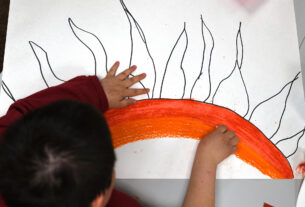Although Jewish children and adolescents born in Ethiopia who came recently on aliyah received little or no adequate examination and treatment for ophthalmological conditions, they have fewer vision problems here than native-born Israeli kids.
This surprising finding has been discovered in a first study of its kind by researchers at Assuta Ashdod Hospital, Ben-Gurion and Bar-Ilan Universities, Ziv Medical Center (Safed), and Emek Medical Center (Afula). They reported their finding in the April edition of IMAJ, the Israel Medical Association Journal, under the title “The prevalence of amblyopia and eye diseases among pediatric Jewish Ethiopian Immigrants in Israel: An observational, cross-sectional study.”
Dr. Tali Yahalom, Dr. Michael Kinori and colleagues who studied eye problems among the immigrants compared the rates of amblyopia (“lazy eye”), cross eye and other ophthalmological conditions with non-Ethiopian, Israeli children and teens. They found that the rate of lazy eye – which develops when there’s a breakdown in how the brain and the eye work together, and the brain can’t recognize the sight from one eye – was 3.4% in the immigrant youths and 4.4% among Sabra kids – even though the medical care the immigrants received in Ethiopia was non-existent or not very good. The prevalence of cross eye, common refractive errors that make it difficult to see clearly and other eye pathologies were also lower among them.
They had expected that due to poor or no ophthalmological care in Ethiopia, 4% of the Israelis and 15% of the immigrants would be diagnosed with amblyopia.
Early reading, lack of screens may help eye health
The study included 223 children and teens – 136 of them born here and 87 who came to Israel from Ethiopia. The authors suggested that Ethiopian kids were not exposed to smartphones, tablets, TV and other electronic devices so their eyes are better despite lack of care. Intensive use of electronic screens by young people is known to raise the risk of vision problems, including myopia and other refractive errors, they wrote.
Another suggestion is that the Ethiopian (Orthodox) kids went to heder from age 3, and boys studied Torah for many hours a day, getting used to reading small fonts many hours a day from a young age (girls later than three) that strengthened their eyes. This could be a protective factor, they said. While genetics could be a protective factor, they had no evidence of it so far.



